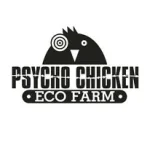This was a reply to a question that came across our local club’s mailing list (wncbees.org) but seemed worth putting here for future reference:
Heidi and Amanda,
Jennifer gave a great rundown of things for you, Thanks Jennifer!
Like Robin, I have also had good success performing queenless splits, where the queenless bees create emergency queen cells using normal brood cells from larvae of an appropriate age as determined by the queenless hive. The two queens I have reared in this way both returned from their mating flights and did a great job with nice laying patterns.
I only had time to dig up one reference, but according to this site, supercedure cells, unlike emergency queen cells, are purpose built for rearing new queens, but in the middle of the frame to keep the existing queen they are attempting to replace from knowing about her successor:
Emergency cells can produce viable queens, as I have observed, and it is the natural (meaning evolutionarily devised) method bees use to handle an injured or missing queen. There is the potential of getting a smaller queens out of emergency cells since they didn’t start out intended for a queen. In some circumstances, once an emergency queen returns mated, the hive will choose to perform a supercedure to replace her if they deem she is not fit for the job, with a queen emerged from a supercedure cell purpose built for raising a queen (sorry I don’t have a reference handy for this statement, pretty sure it came out of either the Crowder and Harrell “Top bar beekeeping” or “The Beekeeper’s Handbook” by Diana Sammataro and Alphonse Avitabile.
At the ‘Born and Bred’ workshop last weekend, (put on by the NCSBA) I was impressed to hear how many of the speakers repeated this theme, in multiple ways, that we need to encourage stronger, regional genetics and get away from keeping bees on life support with treatments and imported queens from different regions.
Several of the speakers also went on to say in a nutshell that, the more we work _with_ the natural process bees use to perpetuate themselves, not only will our job be a lot easier, but we’ll wind up with healthier, regionally robust genetic stock which can including natural varroa resistance!
Hives not resistant to varroa that die can no longer spread their weak genetics–sad for the hive, good for the species (this is why I have no problem with ‘bee havers’ or ‘ornament hives’–natural selection dictates they will ultimately die, OR benefit the species by spreading healthy genetics).
How can you tell if your bees are naturally resistant? If you treat without careful monitoring, you can’t.
If your varroa population only increases a few percent in the lat summer and levels off, ‘winner winner chicken dinner’ you’ve got a queen with varroa resistant characteristics!
But this is something you won’t know if you chemically treat your bees at the first sign of increase in varroa numbers.
Now if you’re varroa % in the hive increases substantially above baseline in the fall with no indication of leveling off, you’re going to need to take action by some form of management and re-queening if you don’t want to lose those bees. This doesn’t mean you have to chemically treat, you can make the hive queen-less until all your brood have hatched to break the varroa reproductive cycle before re-queening. Or, if you’re ok using toxic chemicals on your bees (and yourself) you can treat the hive to kill the mites and then re-queen.
What is really important regardless of your management choice, is to re-queen–preferably with a hygienic queen of local stock.
Why re-queen if you’ve treated the bees to kill the mites?
1). Because you don’t want the weak genetics of your non-varroa resistant hive spreading via drones to your neighbor’s apiaries, weakening the genetics of the entire region.
2). no ‘treatment’ is 100% and the mites that survive are the strongest of the bunch. Soft or hard chemical, all treatments push the evolution of mites to a stronger condition.
Introduced species represent a challenge best resolved though natural selection. Unlike huge commercial beekeepers who admit openly that they don’t have time to monitor their colonies, we as smaller beekeeping operations can substantially improve the genetics of the species by pushing evolution in the right direction through management practices that include re-queening when we don’t have a varroa resistant queen.
Hope all this helps and good luck for the summer.






